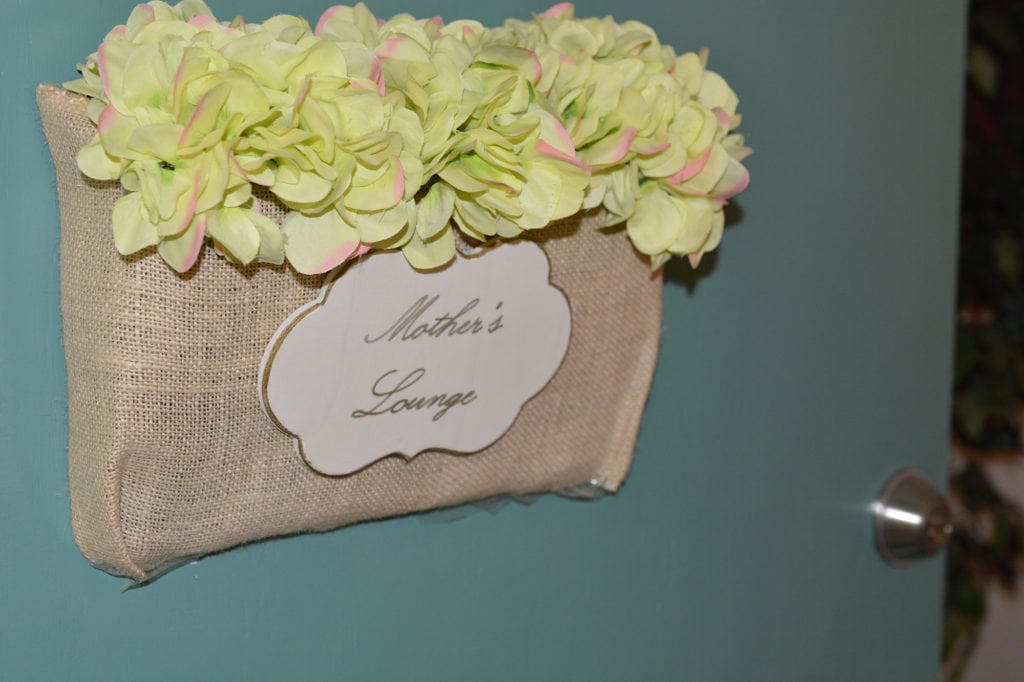At a Glance
University of Arkansas for Medical Sciences (UAMS) Northwest recently converted two rooms at its campus into lactation rooms to provide a safe, private and comfortable area for mothers to pump breastmilk. Staff and interns in the Office of Community Health and Research completed the project at minimal cost. The team found discounted items such as furniture and decorations to transform the rooms into a relaxing atmosphere for UAMS students, visitors and employees using the Business Case for Breastfeeding toolkit as a resource to get the rooms ready. These two rooms will give access to thousands of people each year to a safe, comfortable and clean place to breastfeed or pump.

Public Health Challenge
According to a recent study from the Centers for Disease Control, Arkansas is ranked 50th among states and territories in the United States in percentage of infants who have ever breastfed, and only 20.4 percent of Arkansas infants were reported to have been breastfed exclusively at six months, as recommended by the CDC.
Arkansas’s rates of diabetes and obesity are among the highest in the nation. Furthermore, Marshallese populations face a disproportionately high risk of Type 2 diabetes, and both Marshallese and Hispanic populations are at an increased risk of obesity than other populations in Arkansas. Children who breastfeed – as well as their mothers – experience lower risks of several health conditions such as diabetes and obesity; however, according to the CDC, 60 percent of mothers stop breastfeeding sooner than planned, in part due to policies or lack of support in the workplace.
Approach
While creating a comfortable, healthy environment for new mothers may seem challenging and costly, it can be done with rooms and budgets of all shapes and sizes by following these steps:
• Learn the Laws. The Fair Labor Standards Act requires employers with more than 50 employees to provide reasonable break time and accommodations for employees to express breastmilk (note: bathrooms are not considered acceptable spaces to express milk). In Arkansas, employers are required to provide reasonable unpaid break time each day to an employee who needs to express milk, and requires the employer to make a reasonable effort to provide a private, secure and sanitary room or location other than a bathroom for an employee to express their milk.
• Start Small. Lactation areas should be a minimum of 4’x5’. This means that an unused or scarcely-used office, or a large, unused storage area can easily be converted into a comfortable room for mothers to express their milk. Rooms should include, at a minimum, seating, a locking door, an electrical outlet for pumping and a refrigerator to store milk.
• Comfortable Doesn’t Have To Mean Expensive. Creating a lactation room can be as simple as converting an underused space into a more comfortable room. Items already owned by the company can be used, or they can be found at low cost at secondhand stores. The following is an itemized list of what UAMS purchased for its two lactation rooms (some items, such as the table and chairs, were already owned by UAMS):
• Bulletin Board – $15
• Foot Stool – $9
• Trash Can – $4
• Floral Arrangement/Flowers – $21
• 2 Lamps – $35
• 3 Photo Frames – $8
• Mirror – $5
• Throw – $14
• 3 Throw Pillows – $32
• Storage Coat/Sweater Hook – $7
• Disinfectant Wipes – $2
• Miscellaneous Items – $8
Total Cost = $160
• Get Creative. Lactation rooms should be comfortable: that could mean softer lighting, hanging decorations and photos to help create a peaceful atmosphere, providing a cozy chair and more. Employers should consult with their team and tailor the rooms to fit the needs of their employees.
Benefits of Breastfeeding
• Children who are breastfed experience fewer illnesses, infections and other issues, such as asthma and obesity, than those who are not.
• Mothers who breastfeed experience a lower risk of several health conditions, including high blood pressure, Type 2 diabetes, and ovarian and breast cancers.
• Low breastfeeding rates add more than $3 billion in medical costs per year to American mothers and their children.
• For employers, providing lactation rooms for mothers can lead to multiple benefits, including lower insurance claims, increased productivity, lower turnover rates and higher employee morale.
Find Out More
There are multiple resources online regarding the benefits of breastfeeding for infants and mothers, and the advantages for working mothers to have a comfortable space to express milk during the workday. For more information, visit cdc.gov/breastfeeding; see the U.S. Department of Health and Human Services Health Resources and Service Administration’s The Business Case for Breastfeeding: Steps for Creating a Breastfeeding Friendly Worksite at womenshealth.gov; or visit breastfeeding.org.
The project at UAMS Northwest was managed by the UAMS Community Health and Research’s REACH team.
